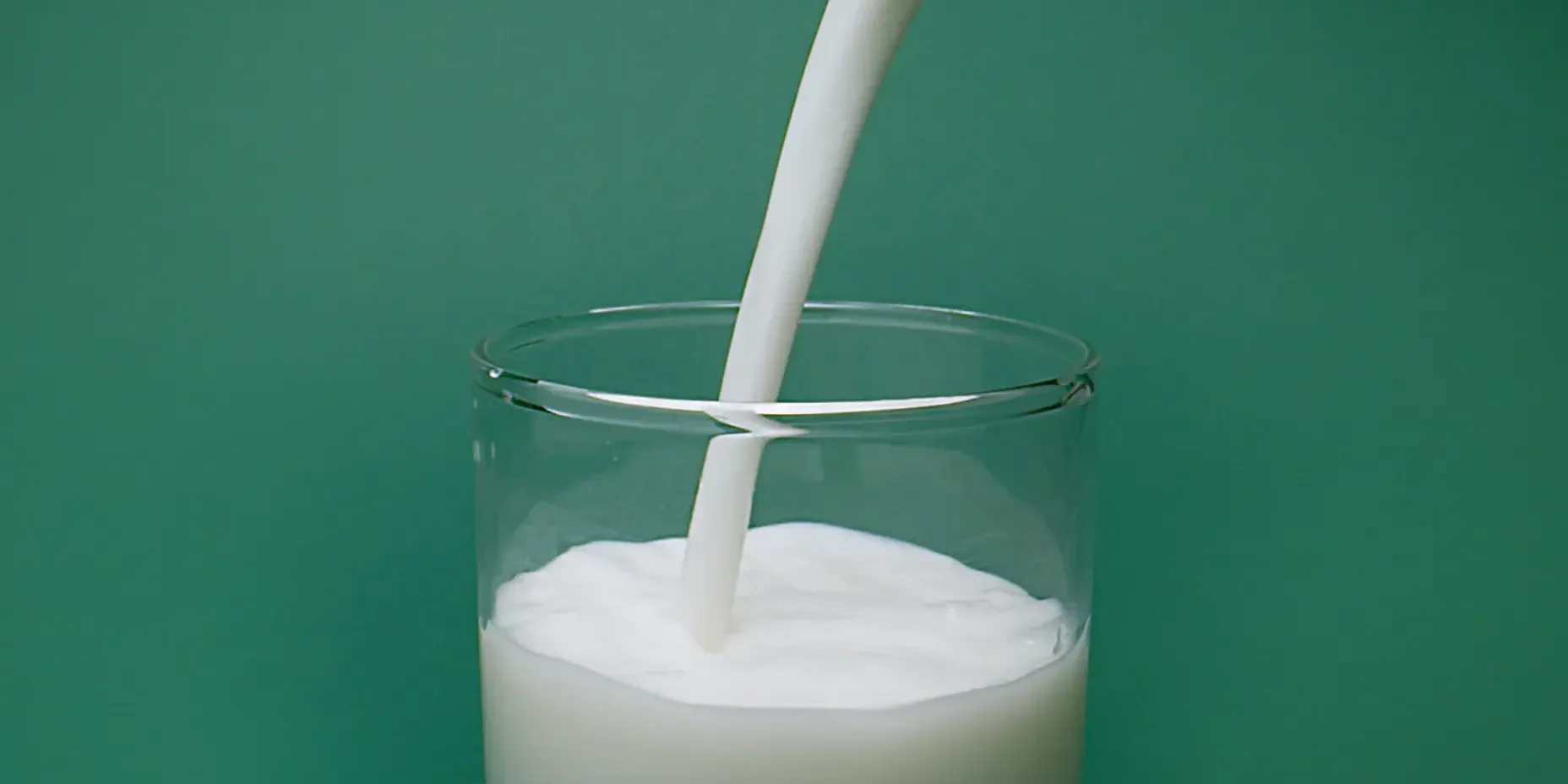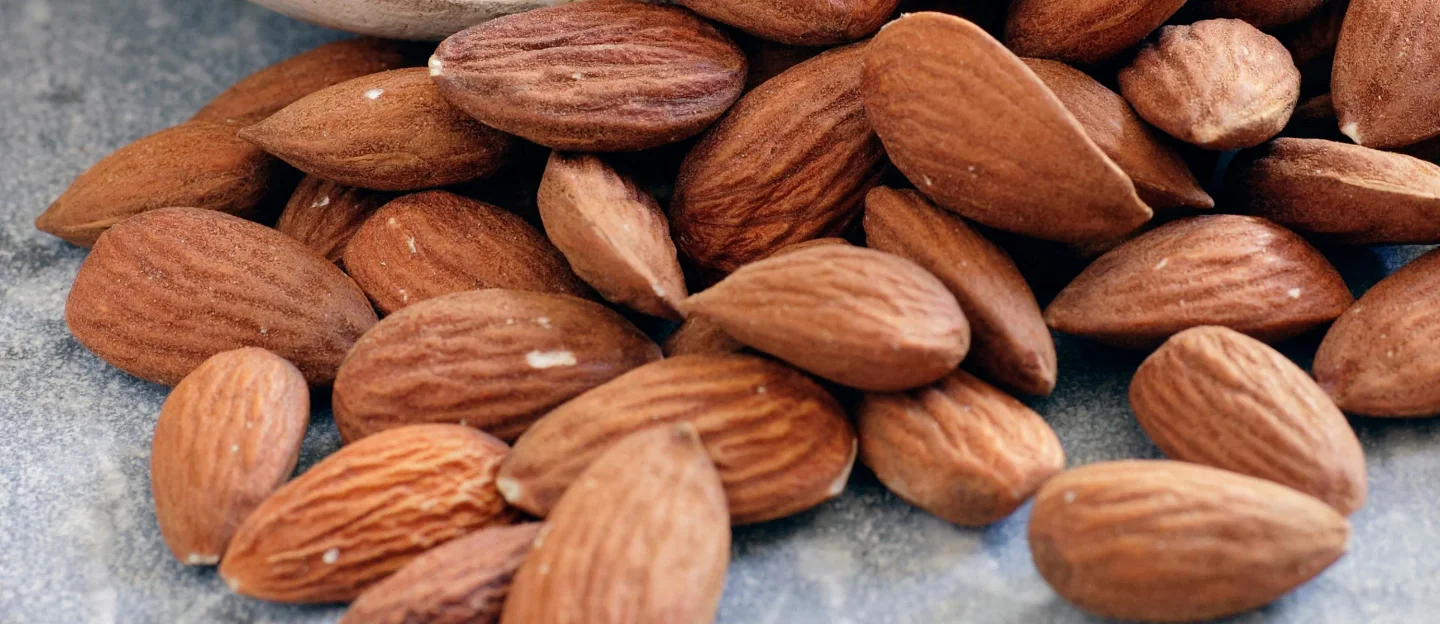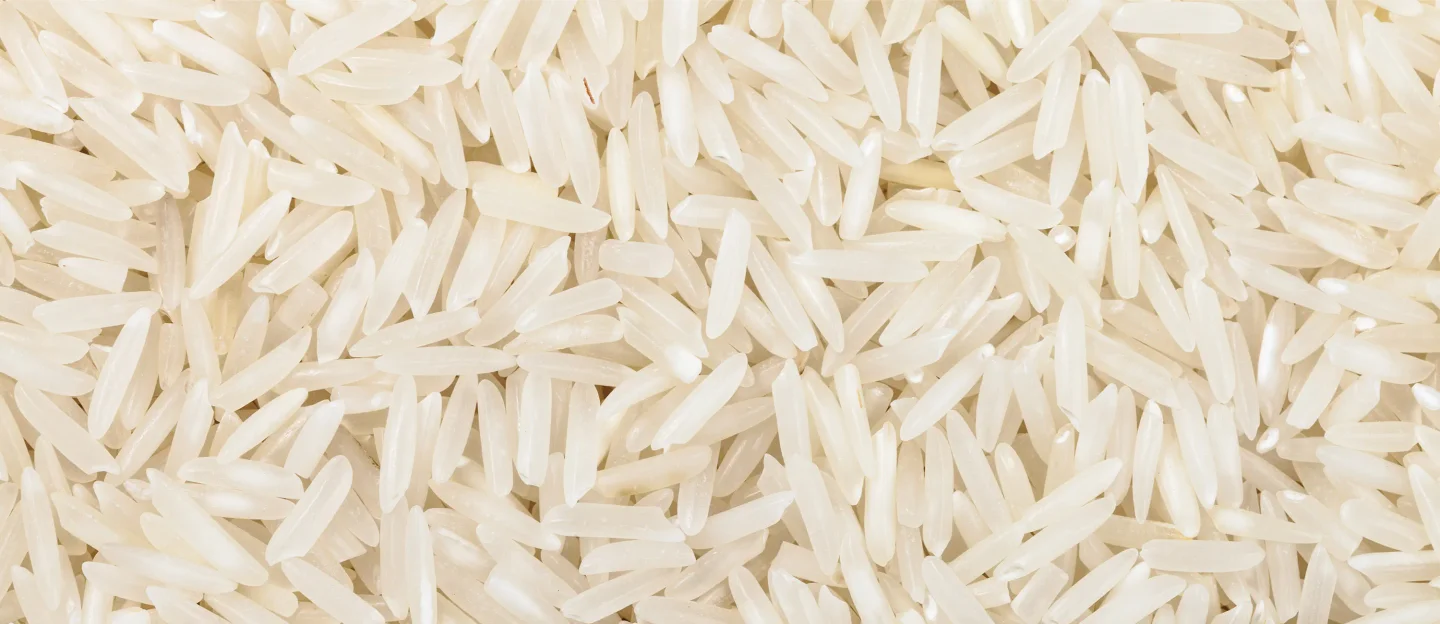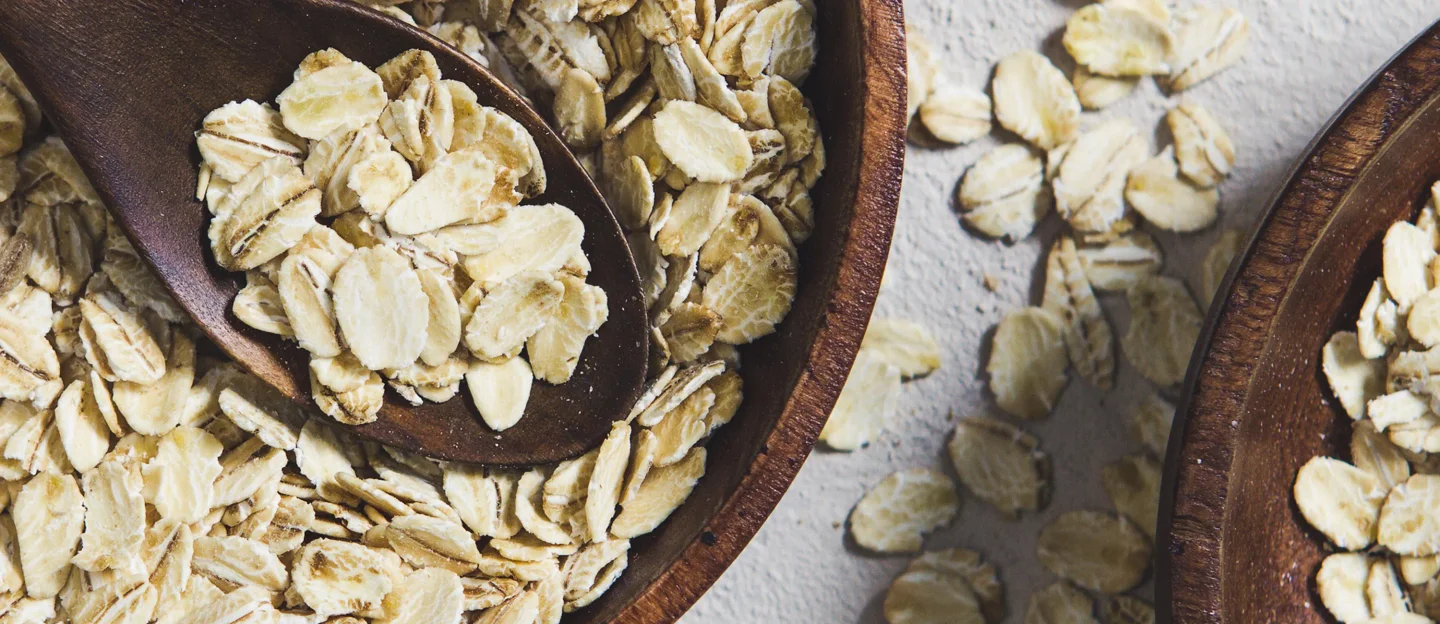How Much Calcium is in Milk?

You know you need calcium for strong, healthy bones, right? And if you’re like a lot of Americans, you rely on milk for the bulk of your dietary calcium.
But how much calcium is actually in milk?
There are about 300 milligrams of calcium in each cup of milk, regardless of its fat content. But you, savvy shopper and consumer, may also be wondering if plant-based milk alternatives contain as much calcium as animal milk. Keep scrolling to find out.
Now, you may have heard rumors that cow’s milk can cause osteoporosis. Turns out that’s not true. Our resident bone health expert Lara Pizzorno, MDIV, LMT, MA, debunked that myth in this article.
Even so, cow’s milk isn’t your only option nowadays. There are many milk options from a variety of different sources to suit every dietary need. But how do these options stack up in the calcium department? Let’s find out!
Comparing Milk and Milk Alternatives:
MILK NUTRITION COMPARISON PER 1 CUP
Calcium (mg) | Protein (g) | Total Fat (g) | Sugar (g) | Total Carbs (g) | Calories (kcal) | ||
|---|---|---|---|---|---|---|---|
Cow’s Milk, Whole | Calcium (mg) 300 | Protein (g) 7.99 | Total Fat (g) 9.0 | Sugar (g) 11 | Total Carbs (g) 11 | Calories (kcal) 161 | |
Cow’s Milk, 2% | Calcium (mg) 300 | Protein (g) 8.0 | Total Fat (g) 5.0 | Sugar (g) 12 | Total Carbs (g) 12 | Calories (kcal) 123 | |
Cow’s Milk, 1% | Calcium (mg) 300 | Protein (g) 8.0 | Total Fat (g) 2.5 | Sugar (g) 12 | Total Carbs (g) 12 | Calories (kcal) 102 | |
Cow’s Milk, skim | Calcium (mg) 300 | Protein (g) 8.0 | Total Fat (g) 0 | Sugar (g) 13 | Total Carbs (g) 12 | Calories (kcal) 86 | |
Lactose-free whole milk | Calcium (mg) 300 | Protein (g) 8 | Total Fat (g) 8 | Sugar (g) 12 | Total Carbs (g) 12 | Calories (kcal) 160 | |
Almond Milk | Calcium (mg) 0* | Protein (g) 1.01 | Total Fat (g) 3.49 | Sugar (g) 0 | Total Carbs (g) 1.99 | Calories (kcal) 45 | |
Oat milk (unsweetened) | Calcium (mg) 10 | Protein (g) 3 | Total Fat (g) 1.5 | Sugar (g) 6 | Total Carbs (g) 17 | Calories (kcal) 90 | |
Rice Milk (unsweetened) | Calcium (mg) 283 | Protein (g) 0.67 | Total Fat (g) 2.33 | Sugar (g) 12.7 | Total Carbs (g) 22 | Calories (kcal) 113 | |
Soy Milk | Calcium (mg) 300 | Protein (g) 6.34 | Total Fat (g) 3.59 | Sugar (g) 1.99 | Total Carbs (g) 8.91 | Calories (kcal) 105 | |
Coconut Milk (unsweetened) | Calcium (mg) 130 | Protein (g) 0.0 | Total Fat (g) 4.1 | Sugar (g) 0.0 | Total Carbs (g) 1.99 | Calories (kcal) 45.6 | |
Goat’s Milk | Calcium (mg) 300 | Protein (g) 7.99 | Total Fat (g) 2.50 | Sugar (g) 10.99 | Total Carbs (g) 10.99 | Calories (kcal) 101 |
*You may have noticed the value of calcium in almond milk is 0. We thought that was strange too, but it turns out virtually all the calcium in almond milk is added by the manufacturer. You can read more about these “fortified milks” toward the bottom of this page.
Calcium in Cow’s Milk
Cow’s milk has been the go-to source of calcium for decades. And despite the surge in popularity of milk alternatives, cow’s milk still dominates milk sales in the United States. Whole, 2%, 1%, and skim milk all provide similar amounts of calcium per cup — about 300 mg.
For reference, according to the National Institutes of Health1, the recommended daily intake of calcium is 1,000 mg for women under 51 and men under 71. For women over 51 and men over 71, it’s 1,200 mg.
Cow’s milk is high in calcium and contains 18 of 22 essential nutrients in one cup. That said, many people are allergic to two proteins found in cow’s milk: casein and whey. And even more people either can’t or have difficulty digesting the sugar in milk, called lactose.

Pros of Cows' Milk | Cons of Cows' Milk |
|---|---|
Pros of Cows' Milk High in Calcium | Cons of Cows' Milk Lots of people are allergic to cow’s milk. Most commonly it’s because of two specific proteins– casein and whey |
Pros of Cows' Milk It contains 18 of 22 essential nutrients in one convenient glass | Cons of Cows' Milk Not suitable for a lot of people with dietary restrictions or choices |
Pros of Cows' Milk Very versatile ingredient | Cons of Cows' Milk Questionable practices. There are concerns over how some dairy farms produce cow’s milk |
Calcium in Lactose-Free Milk
Lactose intolerance afflicts more than 3 million Americans and causes them to suffer from stomach cramps, bloating, and diarrhea when they consume lactose. It’s usually caused by a deficiency in lactase, an enzyme that breaks down the lactose (sugar) found in milk.
For those who are allergic or sensitive to the sugar in milk, lactose-free milk is a godsend. Food manufacturers add lactase to regular cow’s milk to make lactose-free milk. It smells, pours, looks, and even tastes like “real” cow’s milk, and contains the same amount of calcium (300 mg per cup) and nearly identical amounts of protein, fat, sugar, and calories compared to a cup of whole cow’s milk.

Pros of Lactose-Free Milk | Cons of Lactose-Free Milk |
|---|---|
Pros of Lactose-Free Milk Same nutritional profile, taste, consistency of cow’s milk in Calcium | Cons of Lactose-Free Milk Slightly sweeter taste than cow’s milk |
Pros of Lactose-Free Milk Easier to tolerate for those with lactose intolerance | Cons of Lactose-Free Milk Not suitable for those with dairy allergy |
Does Almond Milk Contain Calcium?
Some with sensitivities to dairy or opposition to consuming animal products turn to plant-based milk alternatives. Almond milk reigns supreme as the go-to milk alternative in the United States.
It’s made by blending almonds with water. The mixture then goes through a strainer to remove the pulp, which leaves the “milk” behind. Some almond milk manufacturers add thickening agents like carrageenan (a seaweed derivative). Watch out for sweetened versions of almond milk though. They have a lot of added sugar!
As for calcium content, there’s actually quite a lot of calcium in almonds, but it’s almost all lost during the manufacturing process. So many brands offer calcium-fortified almond milk, meaning they add extra calcium after the fact. Keep in mind that almond milk contains very little protein and, of course, is unsuitable for people with almond allergies.

Pros of Almond Milk | Cons of Almond Milk |
|---|---|
Pros of Almond Milk Very low in sugar and fat | Cons of Almond Milk Very little natural calcium and protein content |
Pros of Almond Milk 100% vegan | Cons of Almond Milk Not suitable for people with nut allergies |
Pros of Almond Milk Contains no lactose. And lactose could be bad for your bones. | Cons of Almond Milk Often contains a lot of unnatural sweeteners (look out for unsweetened varieties) |
Calcium in Rice Milk
Rice milk is a naturally sweet alternative to cow’s milk. It’s made by blending partially milled rice with water. And during this process, the carbohydrates in the rice break down into sugars — that’s where the sweetness comes from.
Rice milk contains about 283 mg of calcium per cup. Not far off the 300 mg of calcium per cup cow’s milk provides, but one cup of cow’s milk contains about 7 grams more protein than one cup of rice milk.
On a less sweet note, rice milk can contain traces of arsenic. You see, arsenic is present in the environment, and rice absorbs more of it than other cereal crops.
According to a report2 published in 2016 by the Food & Drug Administration, adults who limit their consumption of inorganic rice and rice products to 75 parts per billion would decrease the risk of developing lung or bladder cancer to between 17–79% (the exact percentage depends on what was consumed). Keep in mind the FDA estimates that only 39 cases of lung or bladder cancer per million people may be attributable to lifetime exposure to rice products.
In short, the risk of developing cancer from consuming rice products is quite small but more research on large populations should be conducted.

Pros of Rice Milk | Cons of Rice Milk | |
|---|---|---|
Pros of Rice Milk One of the least allergenic milk alternatives | Cons of Rice Milk Provides very little protein | |
Pros of Rice Milk Naturally sweet flavour | Cons of Rice Milk Not suitable for infants | |
Pros of Rice Milk Low in fat | Cons of Rice Milk Contains a lot of carbohydrates, so may not be suitable for diebetics |
Does Oat Milk Contain Calcium?
Oat milk is made by mixing oats and water, milling the mixture into a fine consistency, then straining the liquid. Unfortunately, this process filters out many good-for-you nutrients, making pure oat milk a low-calcium, high-carbohydrate drink.
That’s why many oat milks are fortified to have as much as 350g of calcium per serving. But, as you’ll discover in the “fortified milks” section below, that’s not necessarily a good thing.

Pros of Oat Milk | Cons of Oat Milk | |
|---|---|---|
Pros of Oat Milk Suitable for those with nut or soy allergies | Cons of Oat Milk Only oat milk made with certified gluten-free oats is gluten-free | |
Pros of Oat Milk More fiber than cow, almond, soy milks | Cons of Oat Milk More calories and carbs and less protein than soy and cow’s milk | |
Pros of Oat Milk Vegan and lactose-free | Cons of Oat Milk |
Does Soy Milk Contain Calcium?
As the name suggests, soy milk is made from soybeans. The milk is produced by soaking, grinding, and boiling the beans, then filtering the liquid.
Research shows that soy milk delivers the most balanced nutritional value3 of all cow milk alternatives. Plus, soy milk is naturally lactose-free.
However, unsweetened soy milk can be an acquired taste. Plus, soybean is the most genetically modified crop in the world. In fact, 94% of soy acreage in the United States is genetically modified4. And genetically modified organisms (GMO) are linked with health and environmental issues. So if you opt for soy milk, look for one that’s non-GMO Project Certified.

Pros of Soy Milk | Cons of Soy Milk | |
|---|---|---|
Pros of Soy Milk Lactose-free | Cons of Soy Milk Soy is a common allergen | |
Pros of Soy Milk The most balanced nutritional value of all cow milk alternatives | Cons of Soy Milk An acquired taste | |
Pros of Soy Milk Contains lots of isoflavones, which improve blood pressure5 | Cons of Soy Milk Most soybean crops in the United States are genetically modified |
Does Coconut Milk Contain Calcium?
Coconut milk contains very little calcium and protein naturally. Used widely by keto and other low-carb dieters and those with nut allergies (fun fact: coconut isn’t actually a nut!), coconut milk that people drink can be fortified with vitamins and minerals.
The type of coconut milk made for drinking is often referred to as “coconut milk beverage.” It’s different from the canned coconut milk you might use to make a coconut chia pudding or Thai curry.
Both canned coconut milk and coconut milk beverage are made from the white, fleshy part of a mature, brown coconut. The flesh of the coconut is shredded, simmered in water, and strained. The mix then separates into a rich, creamy layer and a liquid layer beneath. These two layers together are what you’ll find in canned coconut milk for cooking. But for “coconut milk beverage,” the creamy layer is skimmed off.
Coconut milk contains a lot of unsaturated fat compared to other types of milk, but it’s not all bad. That’s because coconut milk contains a type of fat called medium-chain triglyceride; one small study showed this type of fat may stimulate weight loss6. That said, consider using this type of milk in moderation.

Pros of Coconut Milk Beverage | Cons of Coconut Milk Beverage | |
|---|---|---|
Pros of Coconut Milk Beverage Contains healthy fats that can promote weight loss | Cons of Coconut Milk Beverage The high-fat content can be an issue if consumed in large quantities | |
Pros of Coconut Milk Beverage Fortified options often contain high amounts of vitamins A and D | Cons of Coconut Milk Beverage Provides very little calcium and protein naturally | |
Pros of Coconut Milk Beverage Coconut isn’t actually a nut, so allergies aren’t a common issue | Cons of Coconut Milk Beverage Some of the thickening agents in coconut milk can cause digestive issues for some people |
Calcium in Goat Milk
You might not think of goats when it comes to milk sources, but goat’s milk is widely consumed in many areas of the world. It has a distinct smell and taste, and can be a bit hard to find — its scarcity can mean a higher price tag.
And as far as nutritional value, goat’s and cow’s milk are very similar. In fact, the calcium values are almost identical (300 mg per cup). Goat’s milk tends to be easier to digest than cow’s milk because it has smaller protein particles and contains less lactose.

Pros of Goat's Milk | Cons of Goat's Milk | |
|---|---|---|
Pros of Goat's Milk Easier to digest than cow's milk | Cons of Goat's Milk Very distinct smell and taste | |
Pros of Goat's Milk High in calcium | Cons of Goat's Milk Harder to come by in supermarkets and is often expensive as a result | |
Pros of Goat's Milk Less allergic than cow's milk | Cons of Goat's Milk |
Fortified Milks
“Fortified” means the manufacturer has added an essential nutrient to a product.
Cow’s milk is typically fortified with vitamins A and D. Vitamin A is naturally present in cow’s milk, but it’s lost during the production of skim milk. Because vitamin A is such an important nutrient, manufacturers are actually legally required to add it back in. Vitamin D is not naturally present in milk, but it’s added in because it helps our bodies absorb the calcium in the milk.
It’s not just cow’s milk that can be fortified, though. The milk alternatives we’ve discussed on this page are often fortified too. These fortified milks contain added calcium to make their nutritional value similar to that of cow’s milk. But is it too good to be true? Check out the video below to find out.
The Takeaway
When it comes to the calcium content of milk, cow’s and goat’s milk provide the most. For people that can’t drink dairy because of allergies or dietary restrictions, milk alternatives like soy and almond milk are available.
These milk alternatives do offer certain benefits, but they contain less calcium. And calcium-fortified milk alternatives aren’t as promising as they may seem (see the video above).
That’s why you’re far better off getting your calcium from leafy greens like kale or bok choy. Or better yet, a plant-based calcium supplement like AlgaeCal Plus. This supplement provides all 16 nutrients your bones need to stay healthy and strong, including 720 mg of calcium per serving — more than double the amount in one cup of cow’s milk!
To discover other foods high in calcium (including many non-dairy options), check out our article, The Top Calcium-Rich Foods.
Sources
1.https://ods.od.nih.gov/factsheets/Calcium-HealthProfessional/
2.https://www.fda.gov/files/food/published/Arsenic-in-Rice-and-Rice-Products-Risk-Assessment-Report-PDF.pdf
3.Vanga, S.K., Raghavan, V. How well do plant based alternatives fare nutritionally compared to cow’s milk?. J Food Sci Technol 55, 10–20 (2018)
4.https://www.nongmoproject.org/gmo-facts/high-risk/
5.Ramdath, D Dan et al. “Beyond the Cholesterol-Lowering Effect of Soy Protein: A Review of the Effects of Dietary Soy and Its Constituents on Risk Factors for Cardiovascular Disease.” Nutrients vol. 9,4 324. 24 Mar. 2017, doi:10.3390/nu9040324
6.St-Onge MP, Ross R, Parsons WD, Jones PJ. Medium-chain triglycerides increase energy expenditure and decrease adiposity in overweight men. Obes Res. 2003 Mar;11(3):395-402. doi: 10.1038/oby.2003.53. PMID: 12634436







